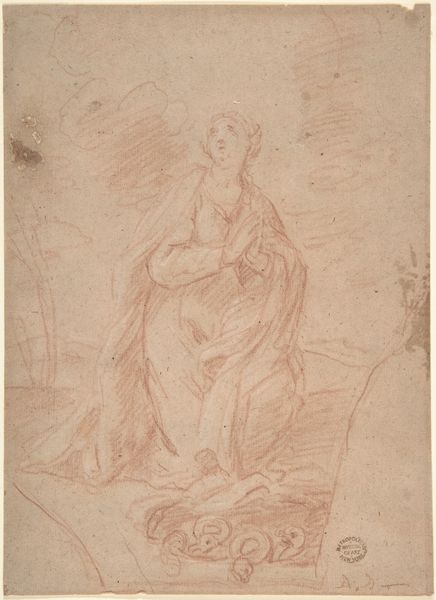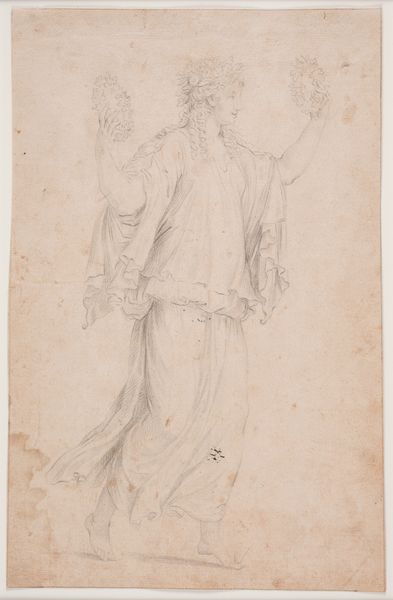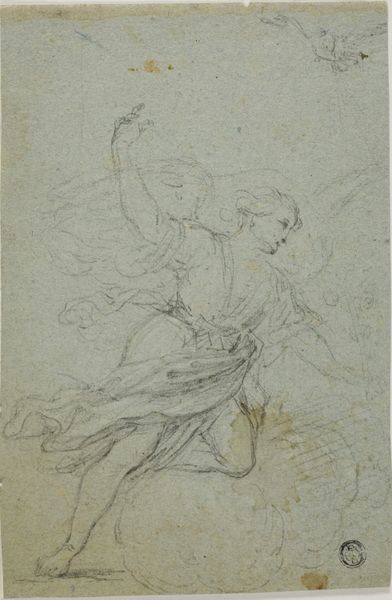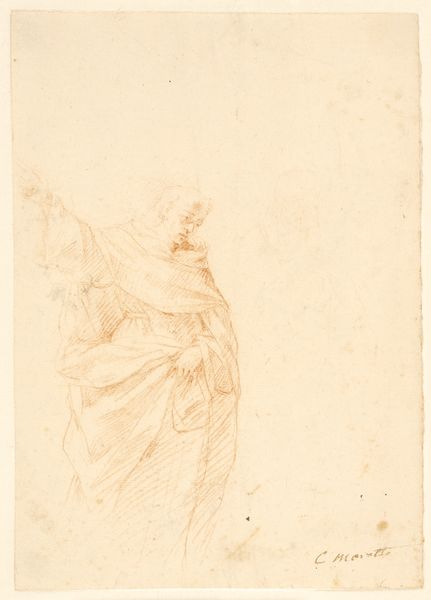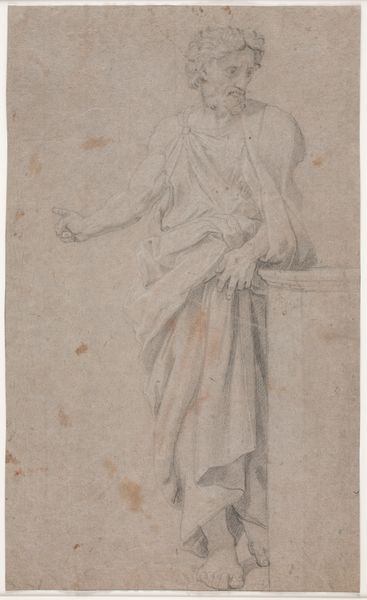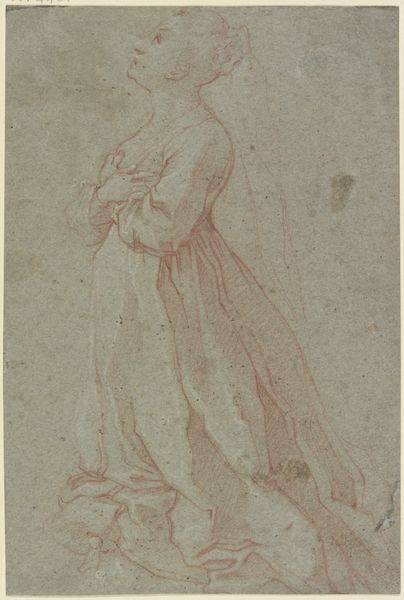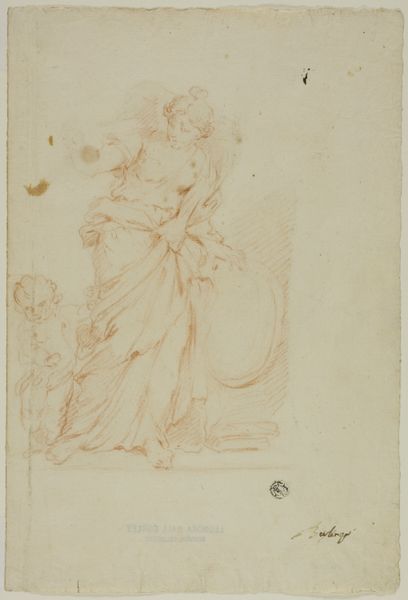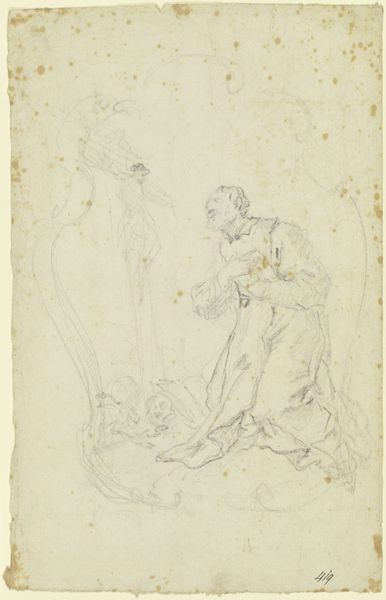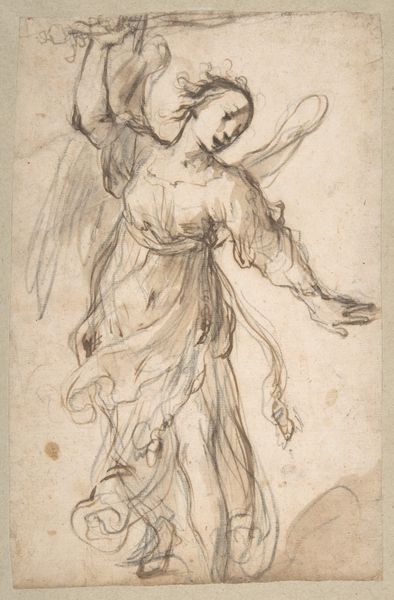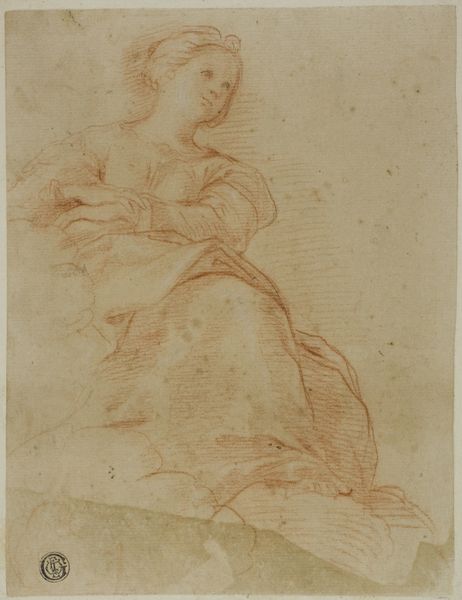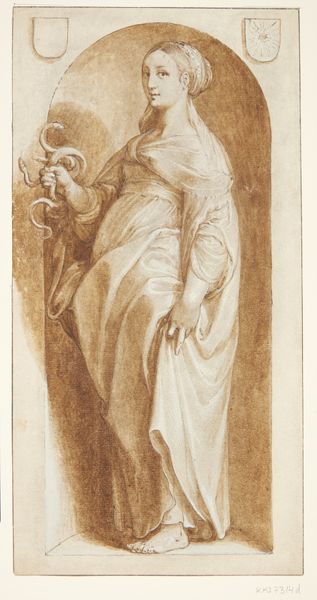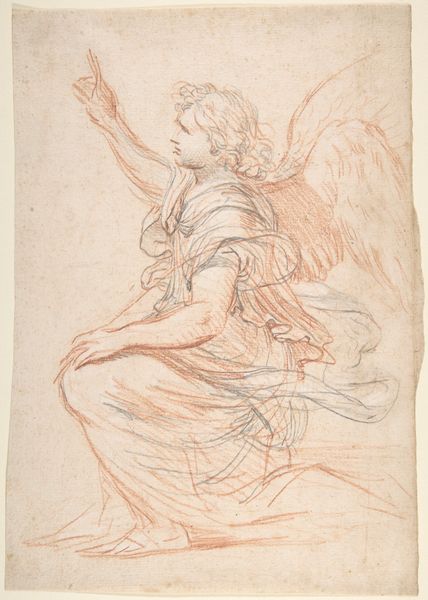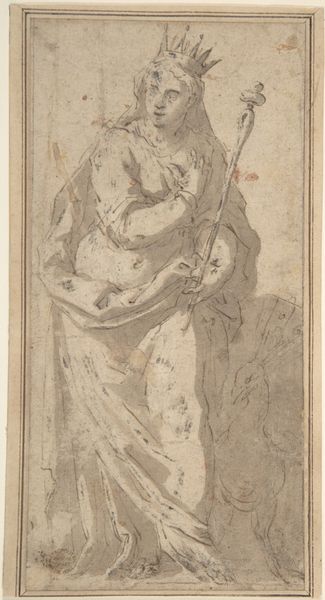
drawing
#
drawing
#
figuration
#
romanticism
Dimensions: 154 mm (height) x 119 mm (width) (bladmaal)
Editor: This drawing, "Seated Child with Angel Wings," by C.G. Kratzenstein Stub, dates from the late 18th or early 19th century. It's rendered in pencil, and there’s a real tenderness in the lines. What do you see in it? Curator: For me, this drawing raises questions about production and consumption in the Romantic era. Notice the visible pencil strokes. The accessibility of graphite as a drawing material, versus costly paints, speaks to a potential shift in artistic production toward a wider range of practitioners. Editor: That’s an interesting point, the accessibility. So, the means of production itself democratizing art making? Curator: Precisely! And consider the subject. An angel-child could symbolize innocence, purity, religious idealism. However, images like this also found a market. Could Stub have intended it for a collector? Is the idealization presented here a reflection of bourgeois desires of the era, consuming idealized versions of childhood or religious icons? Editor: I hadn't thought about the commercial aspect that way. Curator: Look, too, at the age of the drawing itself. The discoloration on the paper is itself a product of time and interaction with the atmosphere; materiality again. How much did its materiality affect how and why it has been preserved, kept safe, out of sight? Editor: It's fascinating how a seemingly simple drawing can open up so many lines of inquiry about artistic production and societal values. Curator: Indeed. By focusing on materials and means, we uncover social and cultural undercurrents of the era in which art came into being. The artist and those consumers of art become equally exposed.
Comments
No comments
Be the first to comment and join the conversation on the ultimate creative platform.
